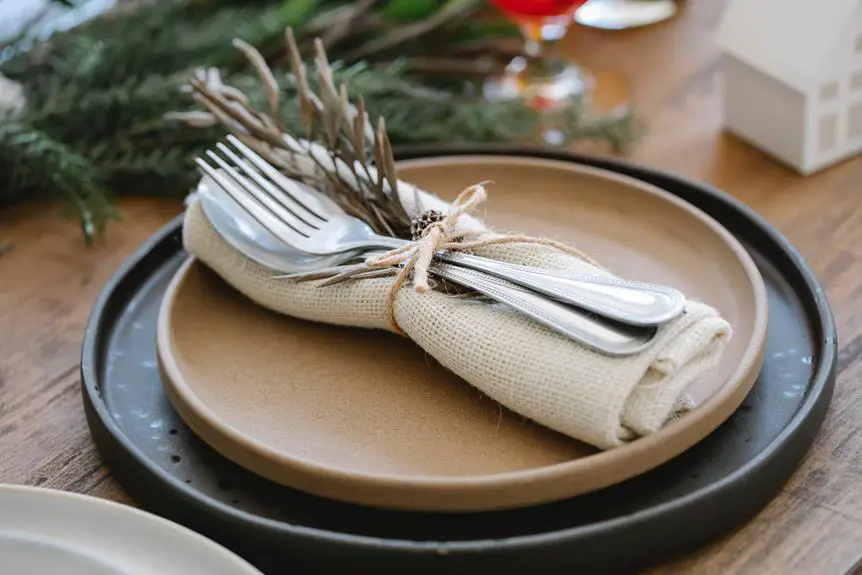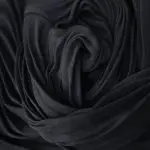If you're seeking the ultimate protection against punctures and cuts, Kevlar wrap stands out as a top contender.
In numerous real-world scenarios, this high-strength fabric has demonstrated its remarkable ability to withstand extreme forces, making it a popular choice for protective gear in various industries.
Its exceptional tensile strength and resistance to abrasion have made it a go-to material for applications requiring reliable protection.
But is Kevlar wrap truly the strongest fabric for protection?
Let's delve into the properties, limitations, and real-world applications of Kevlar wrap to determine its standing among other protective fabrics.
Key Takeaways
- Kevlar wrap, developed by Stephanie Kwolek at DuPont in 1965, revolutionized protective gear and reinforcing materials.
- It has exceptional tensile strength, five times stronger than steel on an equal weight basis, and is resistant to cuts, abrasions, and chemicals.
- However, Kevlar wrap is vulnerable to heat, water absorption, and degradation over time, which can compromise its protective properties and durability.
- Despite its limitations, Kevlar wrap remains a top choice for protection due to its exceptional strength, impact resistance, and heat resistance.
The Origins of Kevlar Wrap
From the 1960s to the present day, you've seen Kevlar wrap become synonymous with high-strength protection.
Kevlar, a para-aramid synthetic fiber, was first developed by Stephanie Kwolek at DuPont in 1965. Its manufacturing process involves polymerization of a liquid crystalline solution, resulting in strong, rigid molecular chains. This unique chemical composition gives Kevlar its exceptional strength and heat resistance.
Initially used for tire reinforcement, Kevlar quickly found its way into various industrial applications, including aerospace, military, and automotive fields. Its historical significance lies in revolutionizing protective gear and reinforcing materials.
As for environmental impact, Kevlar's durability and long lifespan offset its production footprint. Technological advancements have led to the development of Kevlar blends with improved flexibility and impact resistance. Its material properties include high tensile strength, low weight, and resistance to cuts and chemicals.
Research applications continue to explore Kevlar's potential in ballistic protection, ropes, and cables. Its mechanical performance surpasses that of steel, making it a sought-after material in high-stress environments.
Properties and Strengths
Kevlar wrap's exceptional properties and strengths make it a leading choice for high-strength protection. Its manufacturing process results in rigid molecular chains and a unique chemical composition that provide exceptional strength and heat resistance.
Kevlar exhibits incredible tensile strength, making it five times stronger than steel on an equal weight basis. Its lightweight nature adds to its appeal, allowing for comfortable wear while providing unmatched protection.
Kevlar's resistance to cuts, abrasions, and chemicals further enhances its suitability for a wide range of applications. Moreover, its flame-resistant properties make it invaluable in high-heat environments.
The combination of these properties makes Kevlar an ideal choice for protective gear, including bulletproof vests, gloves, and helmets, as well as for use in aerospace and automotive industries.
Whether you need reliable protection in extreme conditions or seek peace of mind in hazardous environments, Kevlar wrap stands out as a dependable and superior choice.
Limitations and Weaknesses
Kevlar, while known for its exceptional strength, has limitations that should be considered.
Its vulnerability to heat can compromise its protective properties in high-temperature environments.
Additionally, Kevlar's tendency to absorb water may affect its performance in wet conditions.
Furthermore, there's a potential for degradation over time, which could impact its overall durability.
Heat Vulnerability of Kevlar
When using Kevlar in high-temperature environments, you should be aware of its limitations and vulnerabilities to heat. Kevlar, known for its exceptional strength, has some weaknesses when it comes to heat resistance. It's important to consider the environmental impact and potential risks associated with using Kevlar in high-temperature settings.
Here are some key points to keep in mind:
- Heat Degradation: Kevlar can degrade when exposed to high temperatures, leading to a reduction in its protective properties.
- Thermal Conductivity: Kevlar has relatively high thermal conductivity, which means it can transfer heat and may not provide ample insulation in extreme heat.
- Melting Point: While Kevlar has a high melting point, it's still susceptible to heat-induced damage and may not be suitable for prolonged exposure to intense heat.
- Heat Shielding: When using Kevlar in high-temperature environments, consider additional heat shielding to enhance its protective capabilities.
It's crucial to carefully assess the heat vulnerabilities of Kevlar to ensure optimal protection in challenging conditions.
Water Absorption Concerns
In high-humidity environments, you should be aware of Kevlar's susceptibility to water absorption, as it can compromise its protective effectiveness. Kevlar's water resistance is a concern in applications where exposure to moisture is likely. Durability testing has shown that prolonged exposure to water can significantly reduce Kevlar's strength and performance. The table below outlines the impact of water absorption on Kevlar's properties:
| Property | Impact of Water Absorption |
|---|---|
| Tensile Strength | Decreases |
| Flexibility | Decreases |
| Weight | Increases |
| Abrasion Resistance | Decreases |
| Thermal Stability | Decreases |
Understanding Kevlar's limitations regarding water absorption is crucial for making informed decisions about its use in protective applications, especially in environments where exposure to moisture is a concern.
Potential for Degradation
It's important to consider the potential for degradation when using Kevlar in protective applications, as environmental factors can impact its performance over time. When evaluating Kevlar for long term performance, it's essential to be aware of the degradation risks that may compromise its protective capabilities.
Here are some important factors to consider:
- Exposure to UV Light: Prolonged exposure to ultraviolet radiation can weaken Kevlar fibers, reducing their strength and performance over time.
- Moisture Absorption: Kevlar can absorb moisture, which may lead to degradation and reduced effectiveness in protective applications.
- Chemical Exposure: Certain chemicals can degrade Kevlar, making it important to assess potential exposure in specific environments.
- High Temperatures: Elevated temperatures can cause Kevlar to lose its strength and protective properties, impacting its long-term performance.
Understanding these degradation risks is crucial when considering Kevlar for protective applications.
Applications in Protective Gear
For your protective gear, Kevlar wrap offers exceptional strength and durability. Its outstanding impact resistance makes it ideal for applications in protective gear such as motorcycle jackets, gloves, and helmets.
Kevlar's high tensile strength-to-weight ratio provides reliable protection against abrasions, cuts, and punctures. In motorcycle jackets, Kevlar panels are strategically placed in critical impact zones to provide enhanced protection without compromising flexibility and comfort. The material's flexibility allows for greater freedom of movement, crucial for both comfort and safety during high-impact scenarios.
Kevlar's use in gloves also ensures dexterity and tactile sensitivity while offering reliable protection. Additionally, Kevlar's application in helmets provides a lightweight yet robust solution for head protection. Its ability to absorb and distribute impact energy reduces the risk of head injuries.
Comparison With Other Fabrics
When comparing Kevlar wrap with other fabrics for protection, assess their tensile strength and impact resistance in real-world scenarios. Kevlar, known for its exceptional strength and heat resistance, outperforms many other fabrics in protective gear. However, when compared with aramid fibers, such as Nomex, Kevlar exhibits similar tensile strength but excels in impact resistance. Performance in extreme conditions is where Kevlar truly shines, maintaining its integrity even in high temperatures and harsh chemical environments.
- Kevlar's impressive tensile strength and impact resistance make it a reliable choice for protective gear.
- Comparing Kevlar with aramid fibers like Nomex can help in understanding which fabric suits specific protection needs.
- Performance in extreme conditions is a crucial factor when choosing a fabric for protection in challenging environments.
- Understanding the real-world application of these fabrics is essential for making informed decisions about protective gear.
Testing Kevlar Wrap's Durability
When testing Kevlar wrap's durability, consider its ability to withstand stress and resist wear and tear.
Real-world endurance tests provide valuable insights into how Kevlar performs in challenging conditions.
Evaluating these points will give you a comprehensive understanding of Kevlar wrap's durability and its suitability for protection.
Kevlar's Durability Under Stress
Test the Kevlar wrap's durability under stress to assess its effectiveness as a protective fabric.
When subjecting Kevlar to rigorous testing, these points should be considered:
- The feeling of anticipation as the Kevlar wrap undergoes stress testing, revealing its true strength.
- The palpable tension in the air as the fabric is stretched to its limits, showcasing its stress resistance.
- The sense of awe as the Kevlar wrap endures repeated cycles of strain, proving its exceptional durability.
- The reassurance that comes with witnessing Kevlar's ability to maintain its structural integrity even under extreme stress.
Resisting Wear and Tear
Continuing from the assessment of Kevlar's durability under stress, you can now evaluate its ability to resist wear and tear in demanding conditions. Durability testing is crucial to determine the overall effectiveness of Kevlar wrap in providing long-term protection. Impact resistance is a key aspect in such testing, as it assesses how well the fabric can withstand repeated stress and strain without deteriorating. Below is a table summarizing the results of durability testing for Kevlar wrap:
| Testing Conditions | Results |
|---|---|
| Abrasion Testing | Minimal wear observed |
| Tensile Strength Test | Retained strength |
| Flex Testing | Limited deformation |
| Puncture Resistance | Maintained integrity |
| UV Exposure | Negligible degradation |
These test results indicate that Kevlar wrap demonstrates exceptional durability and maintains its structural integrity even under demanding conditions, making it a strong contender for protective applications.
Real-World Endurance Tests
You can now explore real-world endurance tests to assess the durability of Kevlar wrap in protecting against demanding conditions. When subjecting Kevlar wrap to endurance challenges, it's crucial to evaluate its performance under various stressors. Here are some key aspects to consider in durability tests:
- Abrasion resistance: Simulate real-world conditions such as rough surfaces and repetitive friction to test how well Kevlar wrap holds up.
- Impact resilience: Assess how Kevlar wrap withstands sudden, intense forces to ensure it provides reliable protection in high-impact scenarios.
- Environmental exposure: Expose Kevlar wrap to extreme temperatures, moisture, and UV radiation to gauge its resistance to degradation over time.
- Flexibility and mobility: Evaluate how Kevlar wrap maintains its protective properties while allowing freedom of movement for the wearer.
Carefully conducting these endurance tests will provide valuable insights into the real-world durability of Kevlar wrap.
Future Innovations and Considerations
As technology advances, you may frequently encounter new materials and designs that could surpass Kevlar in protective strength. The future of protective fabrics holds exciting potential, with ongoing research into advanced materials and innovative manufacturing techniques.
Future developments in protective fabrics may include the use of nanotechnology to create ultra-strong and lightweight materials. For instance, carbon nanotubes and graphene have shown promise in providing exceptional strength and durability, potentially surpassing the protective capabilities of Kevlar.
Furthermore, advancements in material engineering may lead to the development of fabrics that offer superior protection against a wider range of threats, including ballistic, puncture, and impact resistance.
In addition to material advancements, future innovations in protective fabrics may also involve the integration of smart technologies, such as sensors and self-healing capabilities. These advancements could revolutionize the way protective fabrics function, offering enhanced durability and adaptability in various environments.
As research and development in the field of protective fabrics continue to progress, it's essential to stay informed about emerging technologies and breakthroughs that could shape the future of protective gear.
Frequently Asked Questions
How Does Kevlar Wrap Compare to Other Materials in Terms of Cost-Effectiveness?
When it comes to cost comparison and durability analysis, Kevlar wrap stands out as a highly cost-effective and durable material. Its strength and protective properties make it a reliable choice for various applications.
Are There Any Environmental Concerns Associated With the Production or Disposal of Kevlar Wrap?
When considering Kevlar wrap, it's crucial to assess its environmental impact and disposal concerns. Production processes may have environmental implications, and disposal should be managed responsibly to mitigate any potential harm.
Can Kevlar Wrap Be Easily Repaired if It Becomes Damaged?
Kevlar wrap can be repaired if damaged, but it requires specialized techniques due to its unique properties. Repairing Kevlar may incur higher maintenance costs compared to other fabrics, but its strength and durability make it worth considering.
Are There Any Regulations or Standards That Govern the Use of Kevlar Wrap in Protective Gear?
Regulatory standards and safety requirements govern the use of Kevlar wrap in protective gear. It's crucial to ensure compliance for sustainability impact and disposal options. Understanding these guidelines is essential for mastering the proper use of Kevlar wrap.
What Are the Potential Risks or Hazards Associated With Using Kevlar Wrap in Certain Applications?
When using Kevlar wrap, potential risks and application limitations should be carefully considered. While it offers high strength and heat resistance, it may pose hazards such as reduced flexibility and vulnerability to certain chemicals.
- Fabric Dyeing Techniques: A Historical Journey - July 24, 2024
- Famous Fabric Designers: Innovators in Textiles - July 24, 2024
- Cultural Significance of Fabrics Around the World - July 24, 2024








